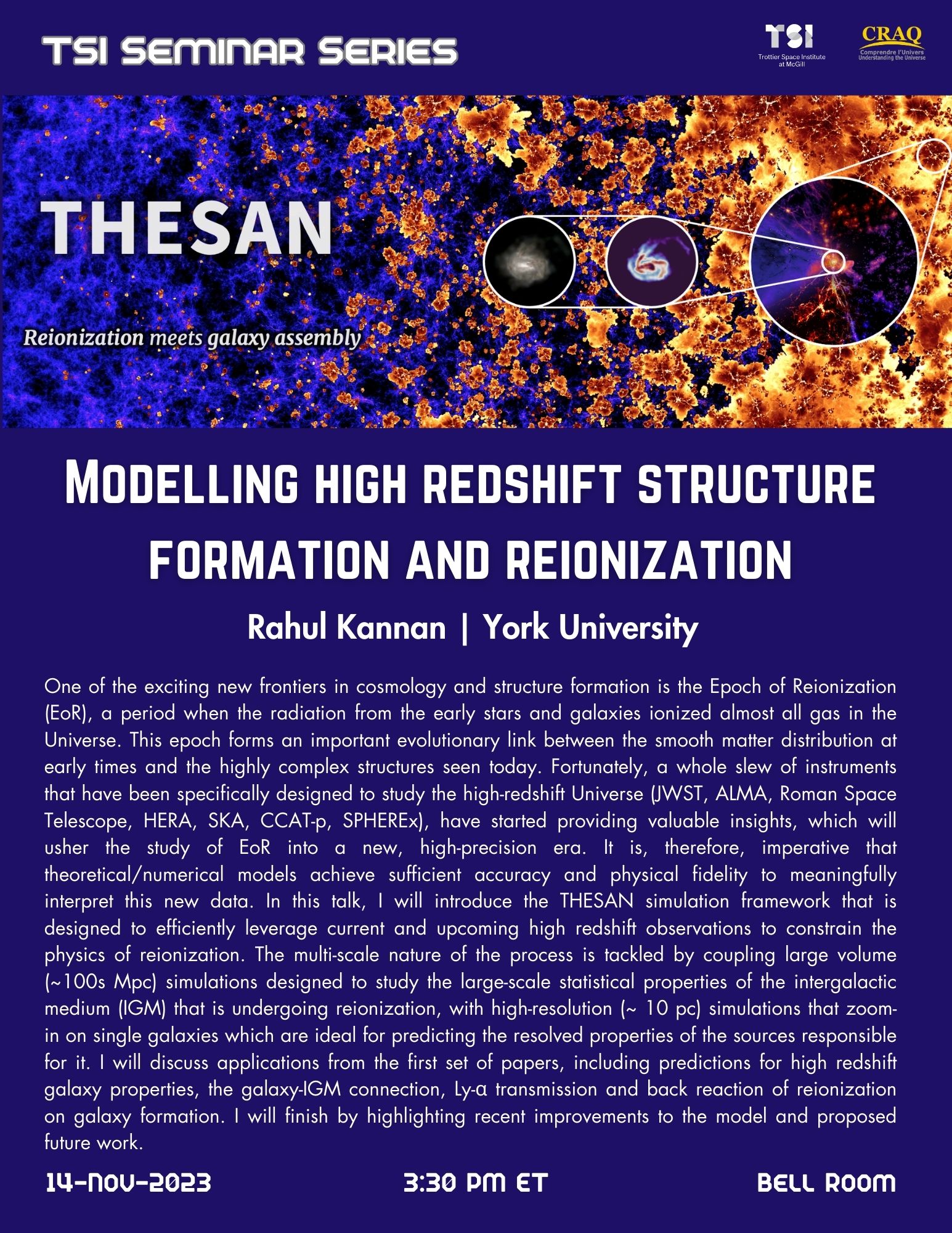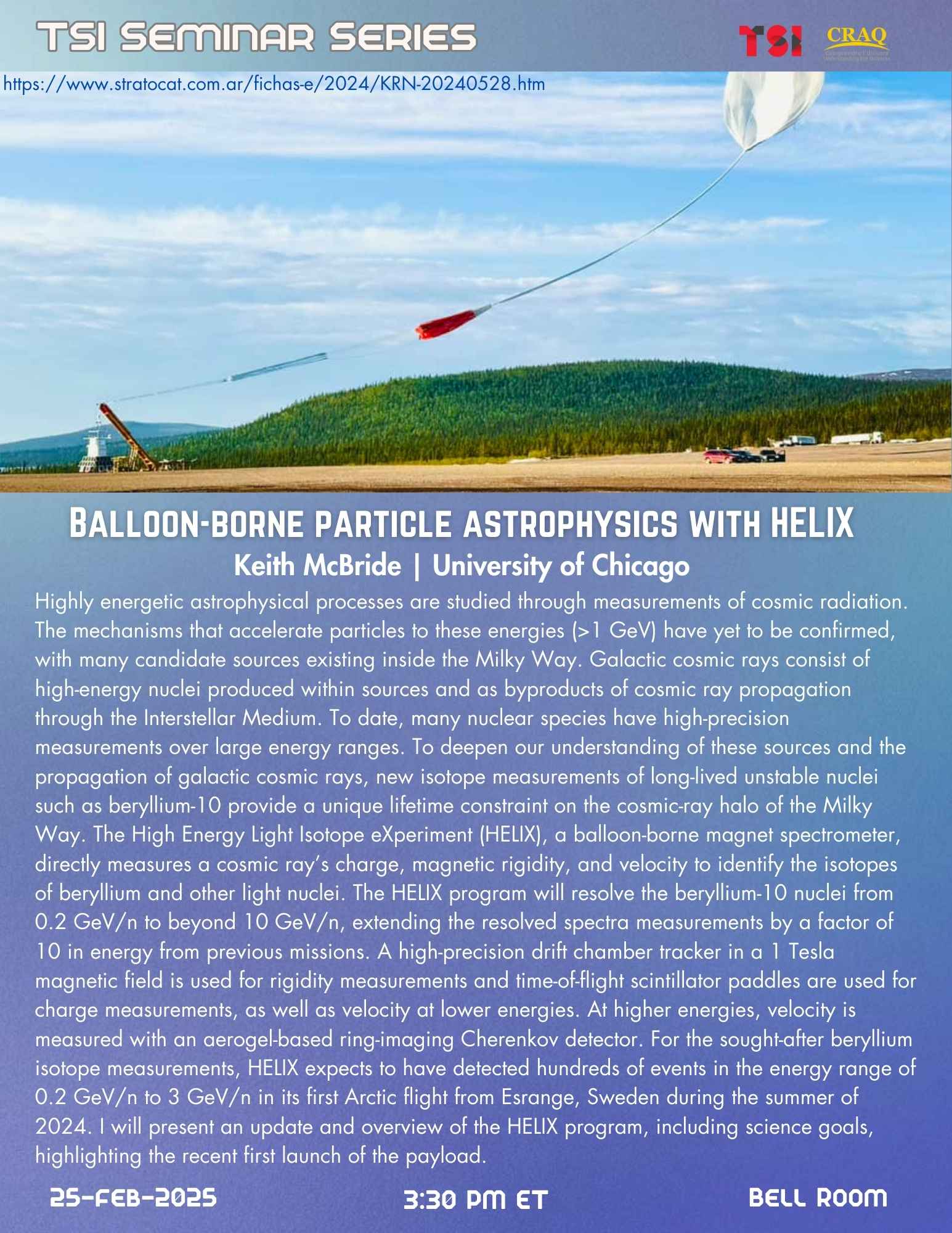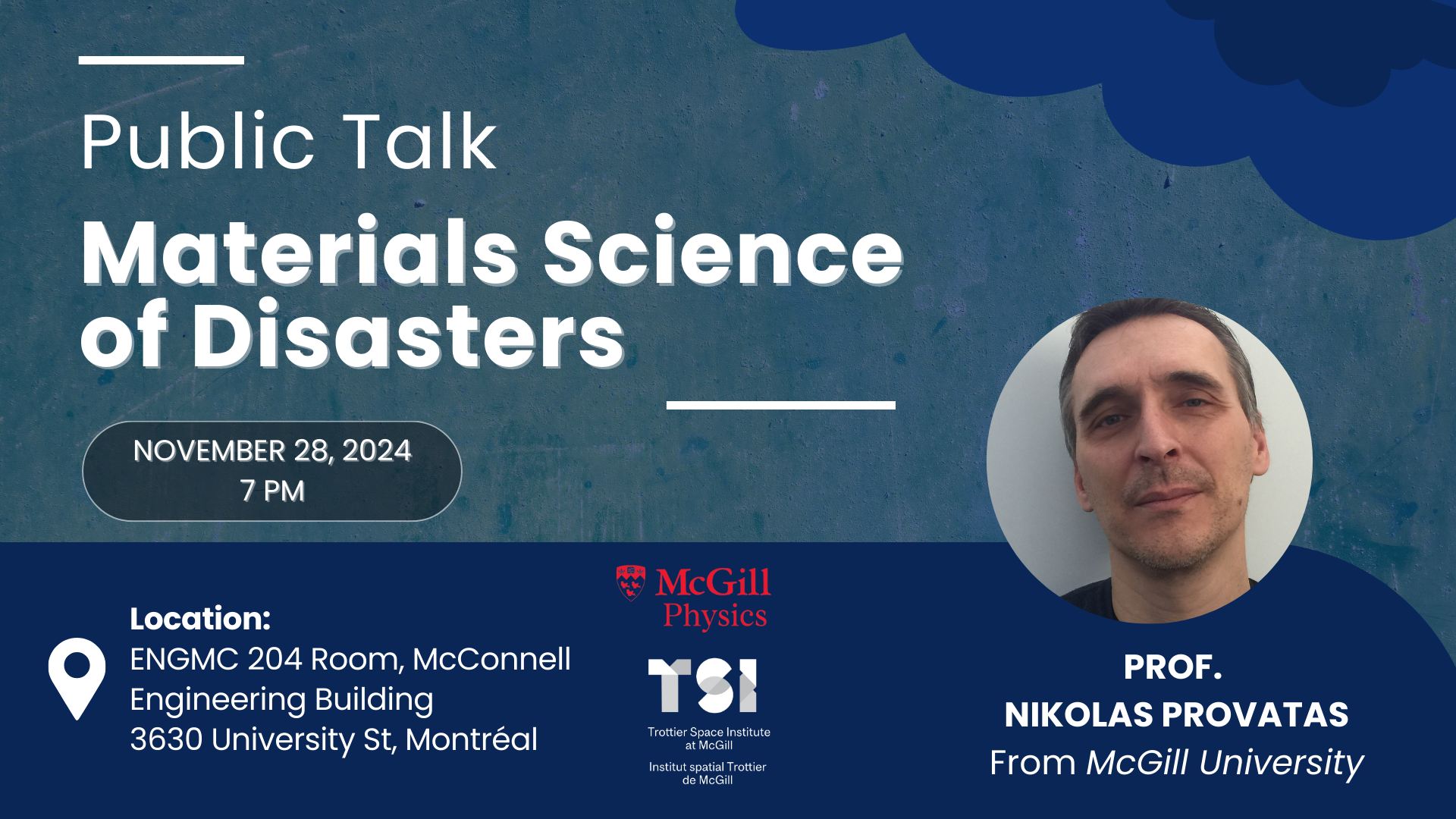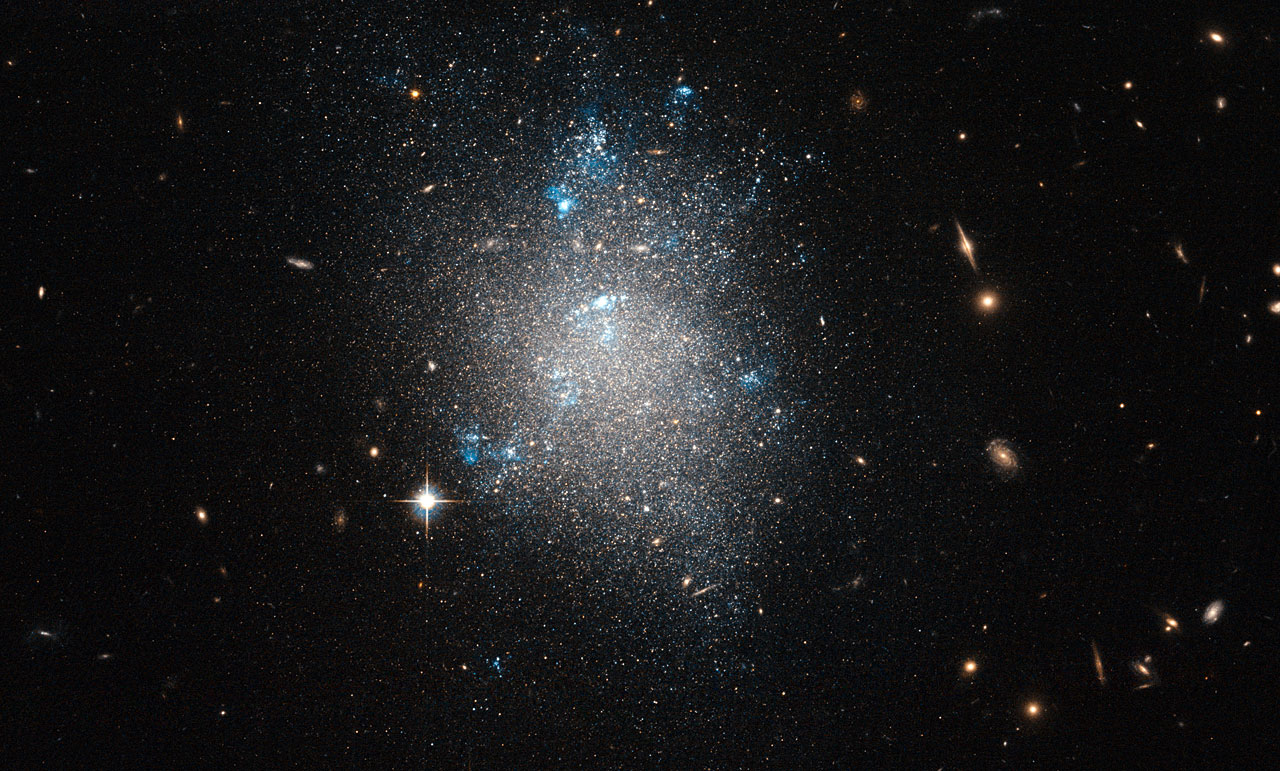Modelling High Redshift Structure Formation and Reionization
Rahul Kannan
(York University)
Nov 14, 2023 3:30 PM
Location: Bell Room
Seminar Event
Title: Modelling high redshift structure formation and reionization
Abstract:
One of the exciting new frontiers in cosmology and structure formation is the Epoch of Reionization (EoR), a period when the radiation from the early stars and galaxies ionized almost all gas in the Universe. This epoch forms an important evolutionary link between the smooth matter distribution at early times and the highly complex structures seen today. Fortunately, a whole slew of instruments that have been specifically designed to study the high-redshift Universe (JWST, ALMA, Roman Space Telescope, HERA, SKA, CCAT-p, SPHEREx), have started providing valuable insights, which will usher the study of EoR into a new, high-precision era. It is, therefore, imperative that theoretical/numerical models achieve sufficient accuracy and physical fidelity to meaningfully interpret this new data. In this talk, I will introduce the THESAN simulation framework that is designed to efficiently leverage current and upcoming high redshift observations to constrain the physics of reionization. The multi-scale nature of the process is tackled by coupling large volume (~100s Mpc) simulations designed to study the large-scale statistical properties of the intergalactic medium (IGM) that is undergoing reionization, with high-resolution (~ 10 pc) simulations that zoom-in on single galaxies which are ideal for predicting the resolved properties of the sources responsible for it. I will discuss applications from the first set of papers, including predictions for high redshift galaxy properties, the galaxy-IGM connection, Ly-α transmission and back reaction of reionization on galaxy formation. I will finish by highlighting recent improvements to the model and proposed future work.




































